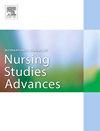某三级医院围产期助产护理需求:时间序列分析
IF 3.1
Q1 NURSING
International Journal of Nursing Studies Advances
Pub Date : 2025-01-21
DOI:10.1016/j.ijnsa.2025.100299
引用次数: 0
摘要
注册助产士和护士的长期短缺是一个严重的全球性问题。然而,目前关于助产人员配置的建议并没有解决由于护理需求的广泛差异而产生的业务人员配置困难。本研究的目的是描述轮班水平的护理需求和现有的人力资源,在三级医院的产科。方法本研究为单中心回顾性纵向研究,为期4年(2019-2022年)。所有在产前病房、分娩病房或产后病房三班制工作的注册助产士和护士都包括在内。为了确定护理需求,我们采用了一种新颖的方法,考虑了每个单位的女性人数和每个病例的预期复杂性。任何未满足的护理需求是通过从每班可用的工作人员工时中减去需求工时,根据每个护理领域预先指定的护士与患者比例来计算的。结果共纳入病例17558例,分析班次13149个。每个分析单位的人力资源与护理需求的匹配程度不同。在产前和产后单位,需求一般得到满足;然而,工党区在32%的轮班中至少缺少一名助产士。根据护理复杂性调整后,缺乏症发生率上升到该病房轮班的55%。结论:除了在评估护理需求时纳入护理复杂性外,轮班和单位层面的分析表明,平均人员数量掩盖了未满足护理需求的实际数量。产房的人员配备需要更大的灵活性,以应付短时间内大量出生的情况。本文章由计算机程序翻译,如有差异,请以英文原文为准。
Perinatal midwifery care demand in a tertiary hospital: A time-series analysis
Introduction
The chronic shortage of registered midwives and nurses is a serious global problem. However, current recommendations regarding midwifery staffing do not address operational staffing difficulties that arise from wide variations in care demand. The aim of this study was to describe shift-level care demand and available staffing resources in a tertiary hospital's maternity department.
Methods
This single-centre retrospective longitudinal study investigated a four-year timeframe (2019–2022). All registered midwives and nurses working a three-shift pattern in the prenatal unit, labour ward, or postnatal unit were included. To determine care demand, we approached it in a novel way, accounting for both the number of women on each unit and each case's expected complexity. Any unmet care demand was calculated in relation to pre-specified nurse-to-patient ratios for each care area by subtracting demand hours from available staff hours per shift.
Results
In total, 17,558 cases were included and 13,149 worked shifts analysed. The match of staffing resources with care demand was different for each analysed unit. In the prenatal and postnatal units, demand was generally met; however, the labour ward had a shortfall of at least one midwife on 32% of all shifts. Adjusted for care complexity, the deficiency prevalence rose to 55% of shifts for this ward.
Conclusion
Alongside the inclusion of care complexity in assessing care demand, shift- and unit-level analyses showed that average staffing numbers obscure the actual volume of unmet care demand. Staffing in labour wards needs greater flexibility to cope with the clustering of births over short periods.
求助全文
通过发布文献求助,成功后即可免费获取论文全文。
去求助
来源期刊

International Journal of Nursing Studies Advances
Nursing-General Nursing
CiteScore
5.80
自引率
0.00%
发文量
45
审稿时长
81 days
 求助内容:
求助内容: 应助结果提醒方式:
应助结果提醒方式:


